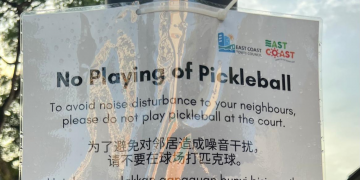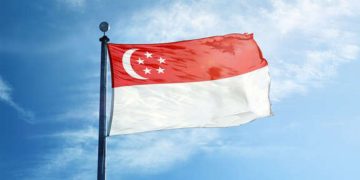There was a palpable sense of excitement in the air at the OCBC Square as skateboarders, street dancers, and parkourists lent a youthful energy to the urban sports that was front and centre at the YouthCreates Urban Fiesta.
“Through this, we will be able to identify more talent that potentially can represent Singapore on an international level,” says judge of the street dance competition Felix Huang, 41.
The event, organised by Sport Singapore from 30 Jul to 7 Aug, drew a steady crowd of over 15,000 across nine days of festivities around the National Stadium.
“Last year, we featured street dance and skateboarding. So this year, we decided that we wanted to continue to push towards having more urban sport activities. We included parkour. The objective is to get them physically active,” says Sport Development Group Chief of Sport Singapore Marcus Tan.
The annual event aims at creating different platforms and opportunities to connect with children and youth to get them to be active through the different forms of physical activity.
“The values are equally important when compared to a traditional sport. When we talk about traditional sports, we speak about qualities like resilience and teamwork. We can see these qualities in urban sport. Parkour for instance, requires determination and practice to get a level of competency in which they can clear obstacles. Any platform, including urban sports are platforms that we will leverage on to reach out to the children,” he adds.
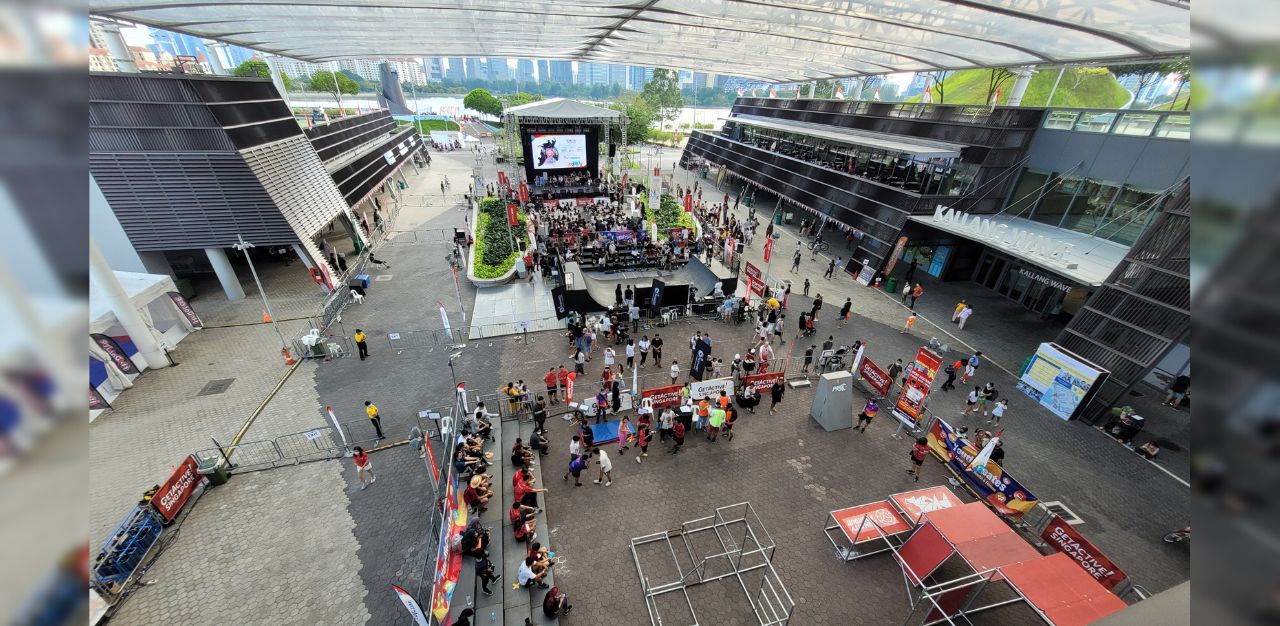
Internationally, urban sports is transitioning from alternative to mainstream, undergoing a rebranding of sorts from its street culture roots to a more mainstream appeal to make its second Olympic appearance in Paris in 2024.
Skateboarding made its debut in the 2020 Tokyo Olympics, with break dancing set to make its entrance at the Paris Olympics, with parkour not far behind for 2024.
With skateboarding veteran Feroze Rahman and up-and-coming talents Nur Farah Atika representing Singapore in the Southeast Asian (SEA) Games in 2019 to the 13-year-old Japanese skateboarding gold medallist Nishiya Momiji, who wrote her name into the history books with a score of 15.26, it is not surprising urban sports opens the opportunity for those in the community to make a name for themselves on the world stage.
Storming the streets
“About 15 years ago, there was probably only one street dance studio in Singapore. Now, there are about 10 to 15 studios teaching all kinds of different genres. I think the industry has evolved,” says Mr Huang.
Aside from judging at dance competitions, Mr Huang founded the *SCAPE Radikal Forze Jam in 2008, the biggest annual street dance festival in the Asia-Pacific, and Recognize! Studios, in 2010, a dance studio and creative platform that provides education for all types of dance and art forms. As someone who has been dancing since 1997, Mr Huang is seen as a veteran and pioneer of the street dance community in Singapore.
“In the early years, it was very street and neighbourhood based. There were practically no events or classes that you had access to. Shortly after that, I think people started developing events for others to compete in that spurred a lot more interest among the public. Even schools have their own dance productions and events, which I think plays an important part in creating a really vibrant scene in Singapore. It’s evolved a lot more from just a street culture to an actual industry, which has grown quite big in the last 10 to 15 years. I think there are many Singaporeans who also travel overseas on their own dime to compete in international and regional events, and fly the flag high,” he says, adding that Mr Jeremy Sim is one such talent. The 26-year-old is also a SEA Games bronze medallist for the ‘breaking’ category of dance sports in 2019.
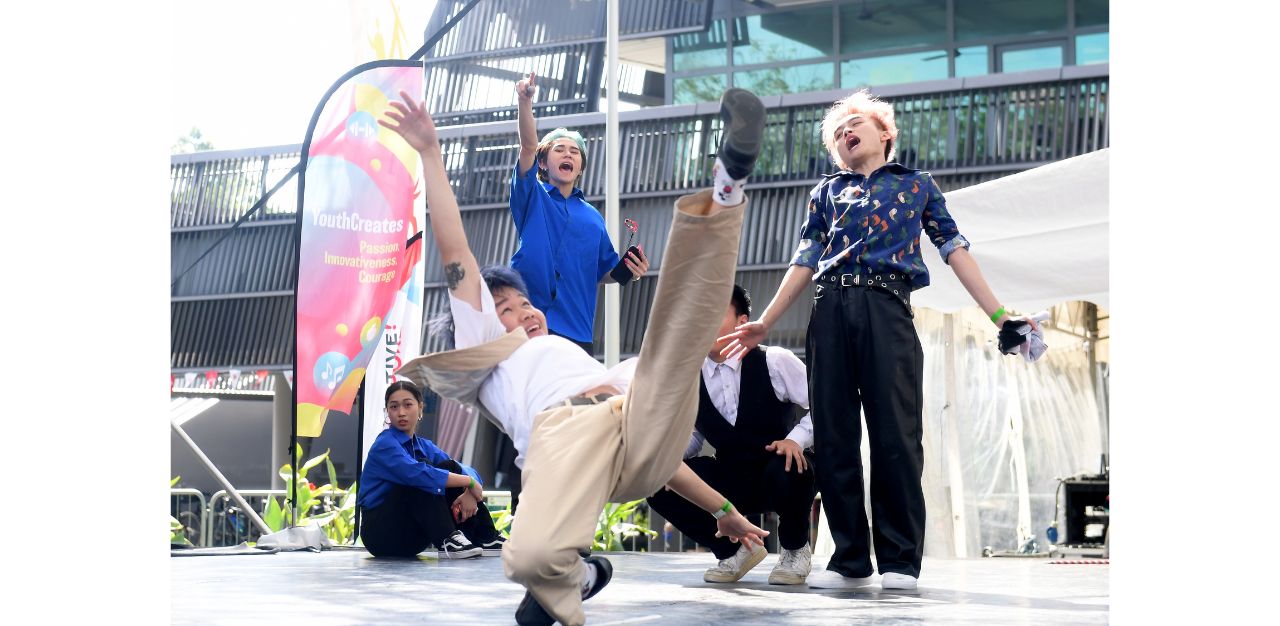
Mr Huang says that a major contribution to the growth of the industry is the access to information as technology advances.
“If you really wanted to learn something back then, you had to go and find a video shop that sold VHS tape,” he says.
“Throughout the past decade, the street dance community has laid a lot of groundwork for lessons and classes that are now being conducted in schools, and individual dance studios, dance courses, and educational talks,” Mr Huang adds.
With the cornerstones of the street dance community and economy laid, Mr Huang is excited about being recognised by government bodies and how the partnership can bring the next generation of dancers to the next level.
“Having Sport Singapore come in to help build an infrastructure can only bring us to another level. Hopefully, we can reach out to more people who are not aware about dance and help them understand what we’re about and hopefully grow the community. Through this, we will be able to identify more talent that can potentially represent Singapore on an international level,” he says.
Leaping cross the bonds of stigma
Across the taxonomy of urban sports, different sports still face different challenges as they go mainstream.
“Public perception is really important for us as we’re a new sport and there is still a stigma that ‘parkour is dangerous’ or ‘parkour is about jumping from roof to roof’. These misconceptions are hard to combat as it’s so deep-rooted into most people’s perception due to what is portrayed in the media. So having more events like this can show the public that there is actually a community here building the sport. With the government supporting us and their emphasis on safety, hopefully Parkour becomes an acceptable sport,” says Mr Koh Chen Pin.
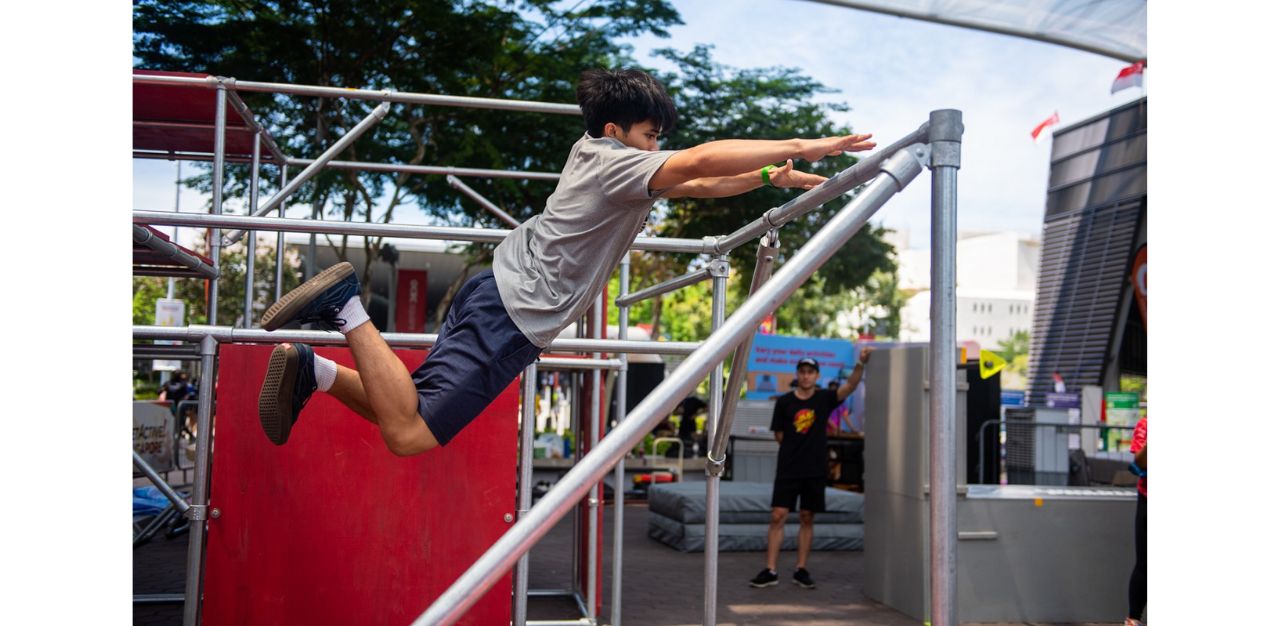
Likewise, Mr Koh or CP as he is popularly known as, was judging at the parkour competition called parkour challenge 2022. He has been a practitioner of parkour for 15 years and runs Lion City Parkour – a supportive space that offers parkour classes for multiple age groups.
Inspired by the parkour film ‘Yamakasi’ in 2007, the 28-year-old says from the days of trying to “imitate the film moves” by “finding random challenges to do so” like “climbing up walls” to being part of the organising team at the YouthCreate Urban Fiesta has helped him to “learn more about working with government bodies and organising events” which to him are “important skills to have” in bringing up the sport to the surface.
“Events like this allow us to introduce newcomers to the sport in a safe and welcoming way, to educate on what parkour is about. It also gives them a glimpse of what our community is like,” says Mr Koh.
He adds that he is working towards having dedicated parkour parks set up with stakeholders like NParks and the Somerset Belt.
Ramping up urban sports
“Skateboarders are remarkably resilient, creative, and welcoming of all different abilities. These attributes and values very much are at the heart of Singapore youth, and we must first recognise it, and then project it,” says Mr Hass Aminian.
As the founder of Millennial Events in 2016, an organiser of action sports events across Asia, Mr Aminian has an extensive background in the sports business and has been actively promoting skateboarding Singapore and the region over the past 10 years through events like Asian Skateboard Championships as qualifiers from Tokyo 2020 Games. He was also the organiser for the skateboarding event at the fiesta.
Mr Aminian says with the inclusion of more urban sports since 2016, and with more to come in Paris 2024 and LA 2028, many countries have organised formal representation in sports agencies and functioning national governing bodies.
“Singapore is on its way to improve on this, and many agencies are actively supporting the progression of this sport into mainstream function bodies,” he adds.
For urban sports like parkour and skateboarding that have their roots in grassroots circles and rely heavily on built structures, the support of the government in building facilities is an important factor in building training spaces for the development of talent.
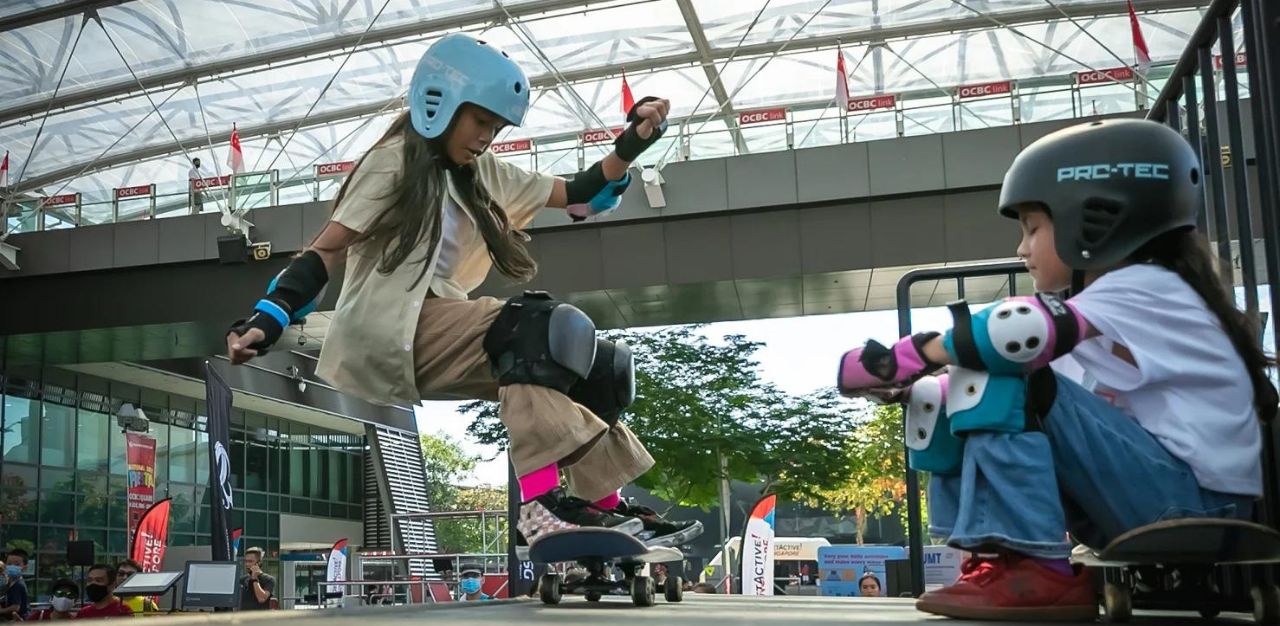
Mr Aminian says that skateboarding in Singapore has benefited from investment in infrastructure by NParks and the National Youth Council (NYC) through skateparks at Somerset Belt, East Coast Park, and the upcoming Jurong Lake Gardens, but it still lacks a “wider network of well-designed skate faculties around the island”.
“Many of those around Singapore are of older design, and of limited variety. With ambitions in events, we really need to have a better pathway to development across multiple fronts, from talent identification to elite development, technical coaching, facilities, and events programmes that test athletes on a regular basis to push their creativity. This is a unique aspect of skateboarding and its progressive skills development. It is difficult to develop in isolation, regardless of the resources you have,” says the 55-year-old.
More importantly however, Mr Aminan notes the need to build on the activities that Singaporean youth reasonate with rather than the concepts and labelling of it.
“Singapore needs to ensure it’s not hung up on urban as a concept, but focus on authentic and credible activities that the youth of Singapore are passionate about. That same passion has driven the urban landscape in many parts of the world where they don’t label their projects but build a cohesive ecosystem and include advocates from young to old, beginner to experienced, private and public,” he says.
On the road to active living and urban sports
As part of Sport Singapore’s push to get Singaporeans active through the promotion of urban sports, the communities surrounding it are excited for the recognition and opportunities it brings.
Mr Tan says that Sport Singapore is working with partners for streetdance to hold both basic and advanced programs at their sports centres which it is “trying to establish and launch within the next couple of months”.
Additionally, with the Kallang Alive project breaking ground since its announcement in 2019, there might be more training infrastructure for other urban sports communities.
“The issue sometimes is that there’s not enough places for them to practice. We are looking at the possibility of placing some of these skateboard ramps, possibly in our sports centres, to facilitate the community to practice at where they are. As part of Kallang Alive, we are also looking at having an urban sports park within the precinct, and potentially it will also have skateboarding and BMX trails. I would say that once we take over the Sports Hub, I think opportunities to increase the community related activities will be there. This is something that we will work towards,” says Mr Tan.
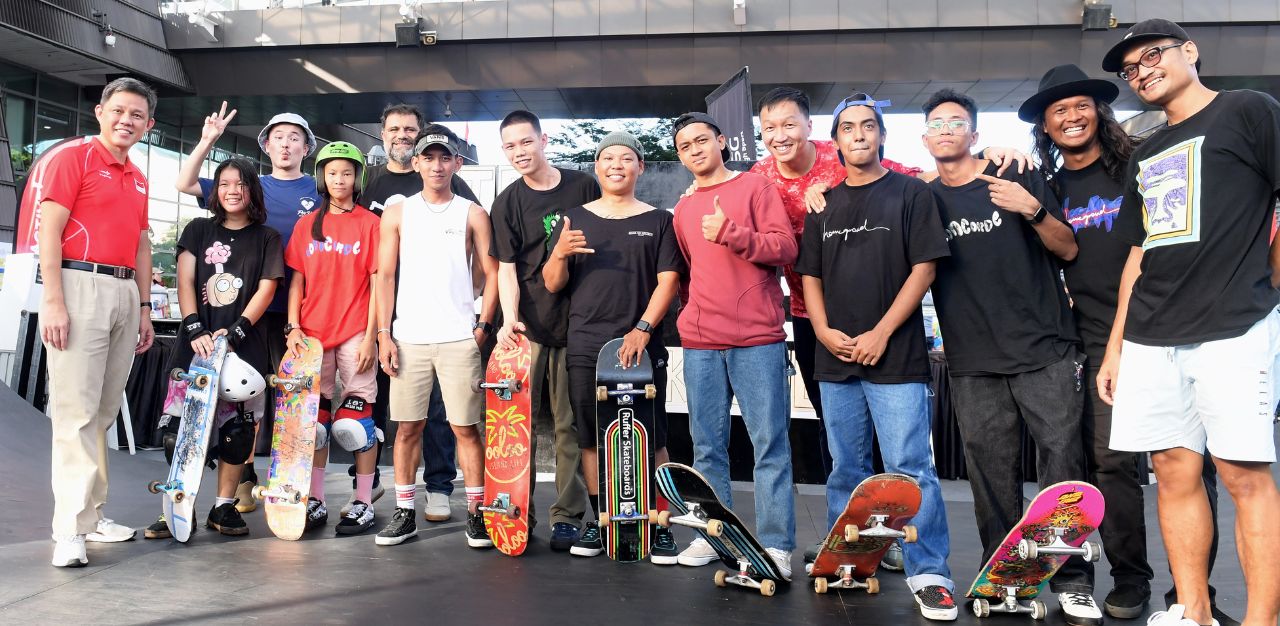
He adds: “It all starts with the overarching objective. Any platform that can get children and youth active, as well as learning values is a platform that we will use. So if they are interested in urban sport, we will use that as an opportunity to develop them. To see a Singaporean performing on the world stage, medals or not, is something that I think all Singaporeans can be proud of.”
RELATED: Risky behaviours of teens: How to ensure their safety in public buildings
Join the conversations on TheHomeGround Asia’s Facebook and Instagram, and get the latest updates via Telegram.





